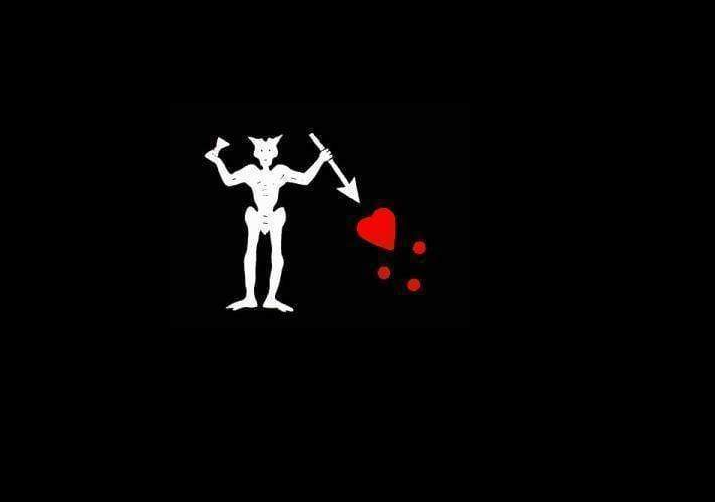Edward Teach (1680? – 1718), often known as Blackbeard, was a renowned pirate who plied the Caribbean, Mexico’s coast, and Eastern North America. He is as well-known now as he was three hundred years ago: he is possibly the most famous pirate ever to set sail.
Blackbeard, the pirate, is the subject of several stories, myths, and tall tales. Are any of them true, though?
One of the biggest parts of his legend is the famous flag of Blackbeard, which is available in replica form from https://ultimateflags.com/collections/pirate-blackbeard-flag/ if you want to buy your own piece of classic pirate imagery.
This flag depicts a skeleton. The skeleton is holding an hourglass, indicating that the time for those going to be boarded is approaching. The bleeding heart foretells impending death if any opposition is encountered. But what is the truth of the history behind this iconic pirate flag?
How do We Know About Blackbeard’s Flag?
Most historians, but not all, rely on original depositions of pirate victims, official correspondence of colonial governors, Royal Navy captains, and merchants, trial records and logbooks, and less reliable published news reports from London and Boston to seek and report the true facts of the Golden Age pirates. Yes, there was fake news in 1718, as there has always been and will always be.
The Evidence for Blackbeard’s Flag
There is no mention of Blackbeard’s flag featuring a two-horned skeleton clutching an hourglass and a spear or dart pointing towards a bleeding heart. In reality, it would be about 200 years before the flag pattern was cited for the first time by an American writer writing a book about buried wealth.
In 1911, Ralph Delahaye Paine, a Yale graduate and former member of the ultra-secret Skull and Crossbones Society, was the first to describe the flag that is now associated with Blackbeard. But he did not even mention Blackbeard! Instead, he linked this flag to a pirate named Quelch, for whom the evidence is surprisingly limited.
Regardless of the truth of Quelch’s adventures and subsequent hanging, we know how the famous flag moved from Quelch to Blackbeard in the popular imagination. In 1933, a pirate historian named Charles Grey mistook Quelch’s hanging with that of another pirate group, along with the future Blackbeard flag, as an illustration of how history becomes distorted over time. Clearly, nobody was paying much attention to this flag.
The flag of the horned skeleton clutching an hourglass was not linked to Blackbeard until 1978, when a famous Time-Life book, “The Pirates of the Spanish Main,” authored by English adventurer and TV personality Douglas Scott Botting and drawn by Gareth Floyd, was published. So, what gives? Nobody appears to know. Time-Life may have considered it humiliating that the world’s most famous pirate did not appear to have his own flag at the time.
So What’s the Truth of Blackbeard’s Flag?
We do not have enough information to definitively replicate Blackbeard’s real flag, and the legendary version is a fun, distinctive design. We can, however, identify some details of the real flag from the historical evidence. We know it was black, and we know it had skulls on it – accounts of his ships exist, and that’s all the info they provide.
Related Posts












